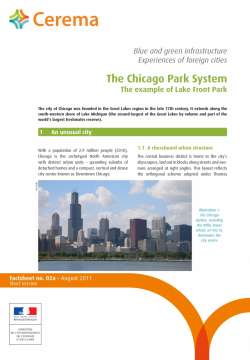
Modeling of sound propagation in forests using the transmission line matrix method - Simulation de la propagation du son en forêt par la méthode des lignes de transmission
La forêt occupe une part significative de notre territoire. Pour l’acousticien, elle est susceptible d’abriter de nombreuses zones calmes, d’atténuer les bruits d’origine humaine. Elle héberge aussi nombre d’espèces animales dont certaines sont sensibles au bruit.
La forêt occupe une part significative de notre territoire. Pour l’acousticien, elle est susceptible d’abriter de nombreuses zones calmes, d’atténuer les bruits d’origine humaine. Elle héberge aussi nombre d’espèces animales dont certaines sont sensibles au bruit.
Or la prise en compte de la forêt dans les modèles de prévision de bruit est très limitée. Pour y remédier, Pierre Chobeau, étudiant à l’école doctorale SPIGA, a effectué sa thèse co-dirigée par l’Ifsttar et le Cerema, au sein du Groupe Acoustique du Cerema Est, durant laquelle il a étendu et exploité les possibilités de la méthode TLM (matrice de lignes de transmission).
Il a d’abord proposé une nouvelle couche absorbante pour cette méthode, puis montré que la TLM convient bien à la simulation de la diffusion par les troncs avant d’étudier l’influence de différents paramètres (épaisseur, densité, distribution des arbres, diamètre des troncs) sur la propagation acoustique.
Forests cover a significant part of the French territory. For the acoustician, forests are likely to harbour many quiet areas and they muffle the noise created by humans. Forests also harbour a large number of animals and some of them are sensitive to noise. However, forests are barely taken into account in the models for noise forecasting.
It is this subject that Pierre Chobeau, a student at the doctoral school SPIGA, decided to study for his thesis. He was supervised by IFSTTAR and Cerema, and worked within the acoustic group at Cerema Est. His thesis explores the potential of the transmission line matrix method. He firstly describes a new absorbing layer for the TLM method and then shows the TLM is relevant for tree trunks scattering modeling and finally studies the influence of a variety of factors (thickness, density, trees layout, diameter of trunks) on acoustic scattering.
Remerciements
List of Symbols
General introduction
- 1 Context
- 2 Noise mitigation and vegetation
- 3 Forested areas in France and their interest for acoustics
- 4 Prediction methods and forest
- 5 Thesis organization
1 Forest and sound propagation
- 1.1 Introduction
- 1.2 Ground effects inside forest
- 1.2.1 Introduction to the forest floor
- 1.2.2 Impedance models
- 1.2.3 Estimation of the ground impedance parameters
- 1.2.4 Insertion loss measurements
- 1.2.5 Discussion on the ground effect related to forest floors
- 1.3 Scattering of acoustic waves inside forests
- 1.3.1 Introduction
- 1.3.2 Single scattering from an isolated tree-trunk
- 1.3.3 Multiple scattering
- 1.3.4 Discussion on sound scattering inside forests
- 1.4 Meteorological effects
- 1.4.1 Meteorological fluctuation related to forests
- 1.4.2 Impact of the meteorological fluctuations on acoustics
- 1.4.3 Discussion on the meteorological effects
- 1.5 Synthesis of the literature review
2 Absorbing matched layers for the transmission-line matrix method
- 2.1 Presentation of the transmission-line matrix (TLM) method
- 2.1.1 Introduction
- 2.1.2 Description of the TLM method
- 2.1.3 Implementation of the TLM method
- 2.2 An absorbing matched layer implementation for the TLM method
- 2.2.1 Introduction
- 2.2.2 Overview of the absorbing conditions used for the TLM method
- 2.2.3 The perfectly matched layer (PML) theory
- 2.2.4 Derivation of a PML-based absorbing layer for the TLM method
- 2.2.5 Numerical results
- 2.2.6 Conclusion on the AML formulations
- 2.3 Conclusion
3 Scattering of acoustic waves by circular scatterers using the TLM method
- 3.1 Introduction
- 3.2 Simulation of single scattering using the TLM method
- 3.2.1 Scattering of a plane wave by a 2D circular scatterer
- 3.2.2 Scattering of spherical wave by a cylinder normal to an impedance ground (3D)
- 3.2.3 Conclusion
- 3.3 Simulation of multiple scattering using the TLM method
- 3.3.1 Multiple scattering by 2D circular scatterers
- 3.3.2 Multiple scattering above a ground (3D)
- 3.4 Conclusion
4 Sound propagation in a simplified forest
- 4.1 Introduction
- 4.2 Design of the numerical simulations
- 4.2.1 Geometry
- 4.2.2 TLM simulations parameters
- 4.3 Results and discussion
- 4.3.1 Time signals
- 4.3.2 Frequency responses
- 4.4 Conclusion
Conclusion
Appendix
Bibliography


